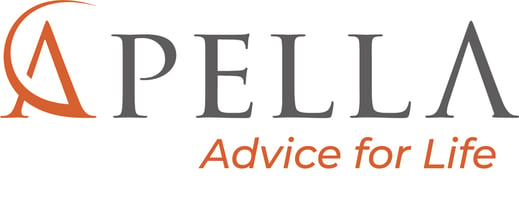Apella Wealth Blog

When Tax Planning Crosses the Line - Understanding the difference between above the line and below the line deductions.
I am often asked during year-end tax planning why it is better to make a Qualified Charitable Distribution (QCD) directly from an IRA as opposed to simply writing a check to charity from a bank account. On its surface, this is a question about charitable donations but at its core, it’s really a strategy in employing above-the-line or below-the-line deductions. From time to time, you may hear these terms (especially if you’re stuck talking to me at a cocktail party) and find yourself wondering, what is the line, anyway?
In short, an above-the-line deduction is an expense (or contribution) that is deducted prior to determining adjusted gross income. Common above-the-line deductions are IRA contributions, Health Savings Account (HSA) contributions, ½ self-employment tax and health insurance premiums, and alimony paid (for divorces finalized before 2019). To draw back to the question of QCD versus cutting a check to charity from the bank, if you are Required Minimum Distribution (RMD) age a QCD will reduce the amount of RMD included in gross income up to the QCD amount, thus reducing your AGI. To give an example: Your RMD is $50,000 and you make a QCD to your favorite charity for the full $50,000. You have just reduced $50,000 of income above the line (note: if instead you chose to make a $60,000 QCD in this scenario, the additional $10,000 will not further reduce your gross income, it will just simply not be included).
In contrast, a below the line deduction (also known as an itemized deduction) is one that reduces taxable income after calculating the adjusted gross income. A few common examples of Federal itemized deductions are home mortgage interest, property taxes, state income taxes, medical expenses, and charitable donations (excluding QCDs). It would be reasonable to think that whether an item is above the line or below the line, they are all deductions that reduce taxes due, so why does the difference matter? An above-the-line deduction will reduce your AGI dollar-for-dollar and (modified) AGI determines important things like Medicare premiums, retirement account contributions, taxability of social security benefits, and various tax credits in addition to reducing taxable income. In contrast, below-the-line deductions are subject to various limitations which mute their overall benefit. If we continue with the example of a charitable donation from a checking account, the donation only garners a tax break if total itemized deductions are over the standard deductions of $13,850 for a single filer and $27,700 for a joint filer (note: the standard deduction is increased to $1,850 per person for those over 65 or blind). Considering itemized limitations placed on mortgage interest, medical expenses and state and local tax deductions paired with the high standard deduction, the benefit of below-the-line charitable deductions are significantly muted in contrast to the dollar-for-dollar reduction in income that a QCD provides in RMD years.
Now that you too know where to draw the line on tax reduction opportunities, don’t forget to reach out to a trusted tax planner to ensure you are maxing out for both above-the-line and below-the-line deductions before 2023 is over!
Apella Capital, LLC (“Apella”), DBA Apella Wealth is an investment advisory firm registered with the Securities and Exchange Commission. The firm only transacts business in states where it is properly registered or excluded or exempt from registration requirements. Registration of an investment adviser does not imply any specific level of skill or training and does not constitute an endorsement of the firm by the Commission. Apella Wealth provides this communication as a matter of general information. Any data or statistics quoted are from sources believed to be reliable but cannot be guaranteed or warranted. Apella Wealth does not provide tax or legal advice and nothing either stated or implied here should be inferred as providing such advice.
Related Articles
Gratitude: One of the Greatest Investments We Often Overlook
How many times have we heard the phrase, “Before it’s too late?” Yet, we neglect to take action...Income Tax Planning for Life Transitions: One Size Does Not Fit All
Although he is not credited with originating the phrase, Benjamin Franklin included the famous...
